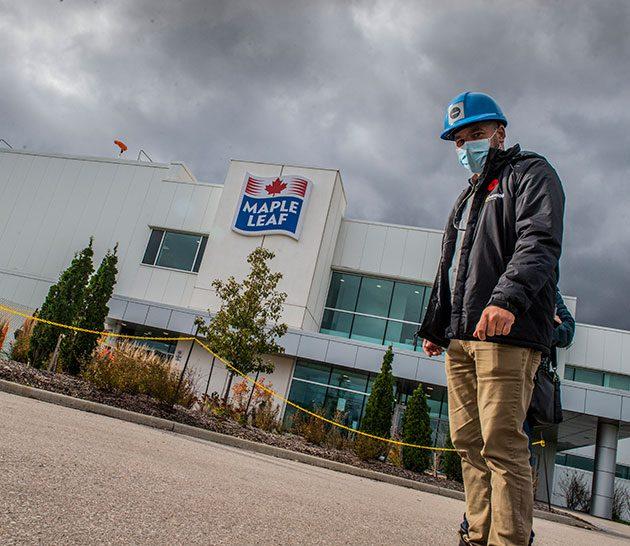Smithfield Foods, a preeminent name in the American pork industry, recently clarified its strategic intentions for U.S. operations—specifically affirming its decision to maintain domestic pork plant functionality, even amid broader industry flux and evolving international trade policies. In confirming this course of action, the company positions itself with an adaptive resilience that transcends mere reactionary business tactics.
At a glance, Smithfield’s operational landscape includes an extensive array of processing facilities scattered strategically across the United States. These plants—integral nodes in a vast supply network—enable swift and effective responses to consumer demand fluctuations and shifting economic conditions. It was only several years ago when Smithfield had opted to close certain facilities for efficiency gains; however, present-day leadership asserts that no additional widespread closures are planned at this juncture.
Yet oddly enough (for some observers), recent headlines did report the closure of Smithfield’s Altoona ham-boning facility in Iowa—notably impacting more than 300 employees. The consolidation transfers production capacity to other regional plants: Monmouth (Illinois), Sioux Falls (South Dakota), and Crete (Nebraska). Despite this contraction in Altoona, company spokespersons reiterate their overarching strategy involves keeping the majority of U.S. pork plants open moving forward—a seemingly paradoxical stance suggesting complex recalibrations behind closed doors.
Now entering a new era post-IPO listing back on the U.S. exchange boards, Smithfield is prepared to leverage fresh capital infusions toward both modernizing existing sites and exploring advanced automation technologies designed to enhance throughput while containing costs—a crucial consideration as labor market volatility persists unpredictably from quarter to quarter.
Tariffs represent another focal point within Smithfield’s evolving calculus; as global meat markets tighten or loosen depending on shifting policy winds from Washington or Beijing alike, executive attention has zeroed in on how duties imposed by China or Mexico could impact export margins for flagship products such as loins or ribs—even while much of their packaged meats portfolio remains geared towards domestic consumption priorities rather than outbound shipments abroad.
Ironically enough—or perhaps predictably so given agribusiness complexity—the potential impacts wrought by tariff modifications do not undermine Smithfield’s steady commitment to expanding internal market penetration here at home: management persists with a vision prioritizing increased value-add transformation within their integrated supply chain model over chasing sometimes-unpredictable foreign exchange windfalls offshore.
A less obvious but equally important factor is workforce stability amidst changing immigration protocols nationwide; considering that immigrant labor comprises much of America’s meatpacking sector headcount today—and absenteeism rates occasionally stun company planners during peak season rushes—the question lingers over how soon-to-be-debated federal regulations might ripple across individual plant floors in forthcoming months.
Industry insiders recognize that every move Smithfield makes reverberates through allied companies—from independent contract hog growers downriver all along the value stream up toward logistics providers whose entire quarterly forecasts rest atop processor ordering patterns set annually each October yet revised sporadically when new numbers arrive unexpectedly mid-springtime rushes every year.—and sometimes even more frequently than anticipated last fall! Producers remain observant about who signals what first;
For consumers worried about pork product availability during turbulent macroeconomic times—with inflation ticking higher one month then slowing mysteriously less so another—they can expect continued broad access at retail chains due largely to Smithfield’s formidable logistical footprint domestically. Shoppers probably won’t notice subtle allocation shifts between stores because high-throughput centralization ensures redundancy should isolated disruptions occur somewhere distant from main city centers—or so goes theory supported by last year data tables tucked away deep inside management quarterly reports rarely circulated publicly outside boardrooms save for annual general meetings attended by just a handful loyal shareholders plus industrious scribes covering livestock beats full-time since college graduation years ago!
Smithfield executives also mention investment enhancement programs touching upon animal welfare measures alongside sustainability initiatives tailored for regulatory compliance and public relations purposes alike—and although senior vice presidents emphasize these efforts during interviews with trade presses routinely focused on financial performance figures week after week—it is undeniable their cumulative efforts shape not only operating costs but long-term brand equity amongst both investors seeking predictable yield streams as well as corporate social responsibility enthusiasts scanning ESG scores closely each fiscal period changeover).
With innovation underpinning daily plant operations now more heavily than ever before—and guided by deft stewardship under CEO Shane Smith—the future trajectory appears robust despite historical headwinds that have buffeted this sector time after time again since initial incorporation decades ago under different ownership models entirely unfamiliar today save among retired directors trading stories quietly at annual alumni events somewhere out West now well removed from today’s fast-paced boardroom drama playing out elsewhere contemporaneously!

